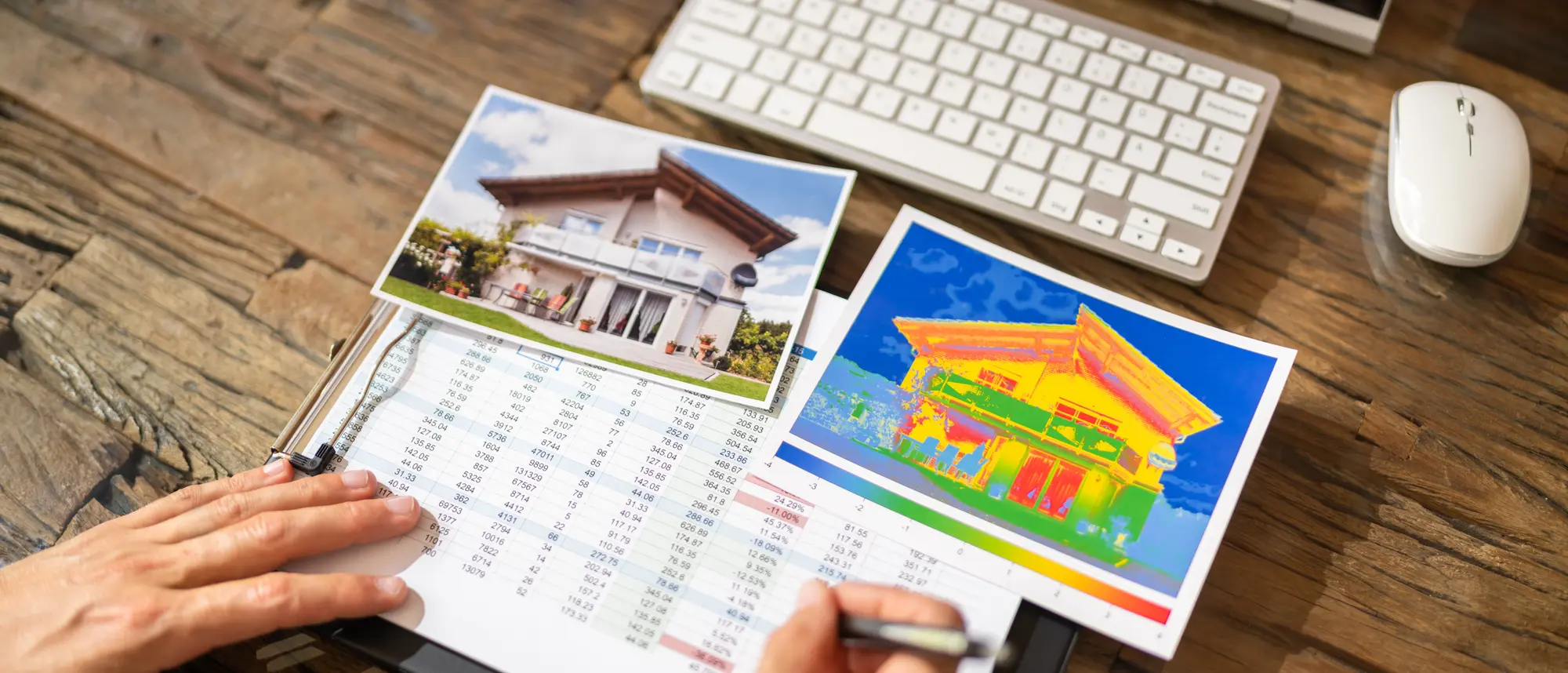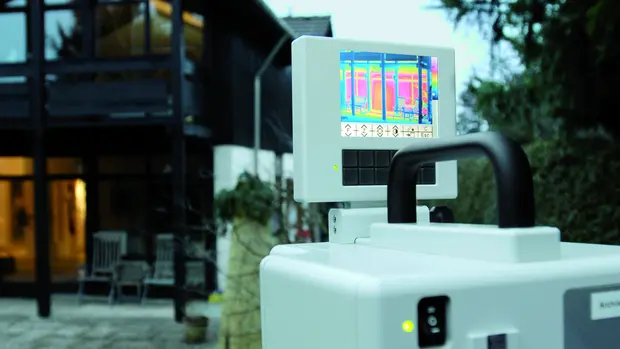On the trail of heat loss
Did you know that an uninsulated or very poorly insulated house radiates up to 70% of the heat to the outside? Draughty door or window gaps are immediately noticeable as energy wasters. But your house can also lose valuable heating energy in other, less conspicuous places. Balconies, roller shutter boxes and radiator niches are typical weak points. A large proportion of heat also escapes through attics - especially if they have not been converted or are inadequately insulated. Thermography makes these losses visible.
Thermography uses a thermal imaging camera to take external or internal images of the building envelope. The camera contains a computer that assigns a colour tone to each temperature, creating a colourful thermal image. Dark purple and blue tones represent low temperatures, light yellow and white colours represent high temperatures. This allows you to clearly recognise where your building is losing heat.
These heat losses affect energy consumption and can cause water vapour from the room air to condense on the cold surface of building components. The result is damp walls and mould growth. Thermographic images help to pinpoint the relevant weak points.
When is thermography useful?
- For analysing weak points in existing buildings before renovation work.
- For quality control after refurbishment work in old buildings or after the construction of new buildings.
- Useful additions to thermography are the energy performance certificate and the blower door test.
What should I bear in mind when recording?
- Thermographic images are most informative when the temperature difference between the interior and exterior is as high as possible (at least 10°C for interior thermography, at least 20°C for exterior thermography). The ideal time of year for thermography is therefore winter.
- The building must be completely heated and all windows and doors must be kept closed for a few hours before the images are taken.
- The building components should not be heated by sunlight. The most favourable time for taking photos is therefore from late evening to early morning.
- It is not possible to take pictures in rain or strong winds.




